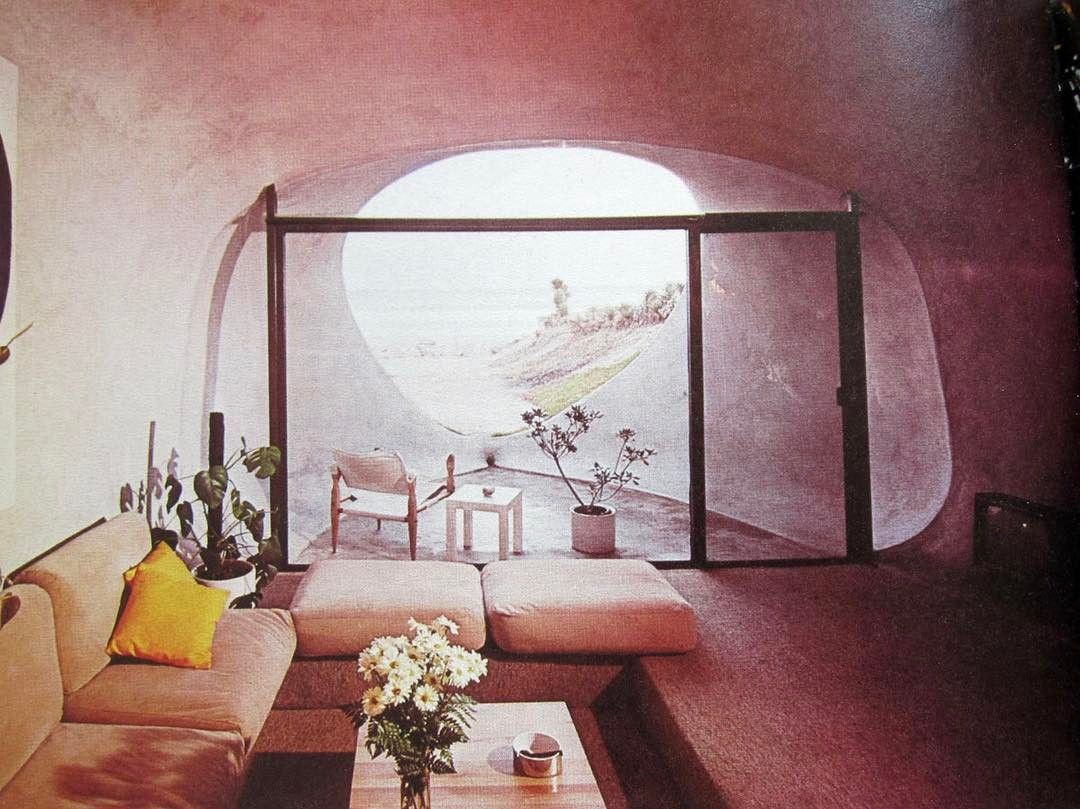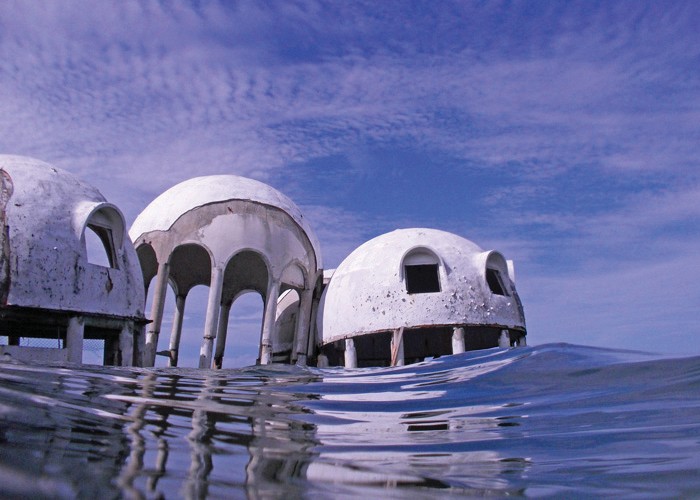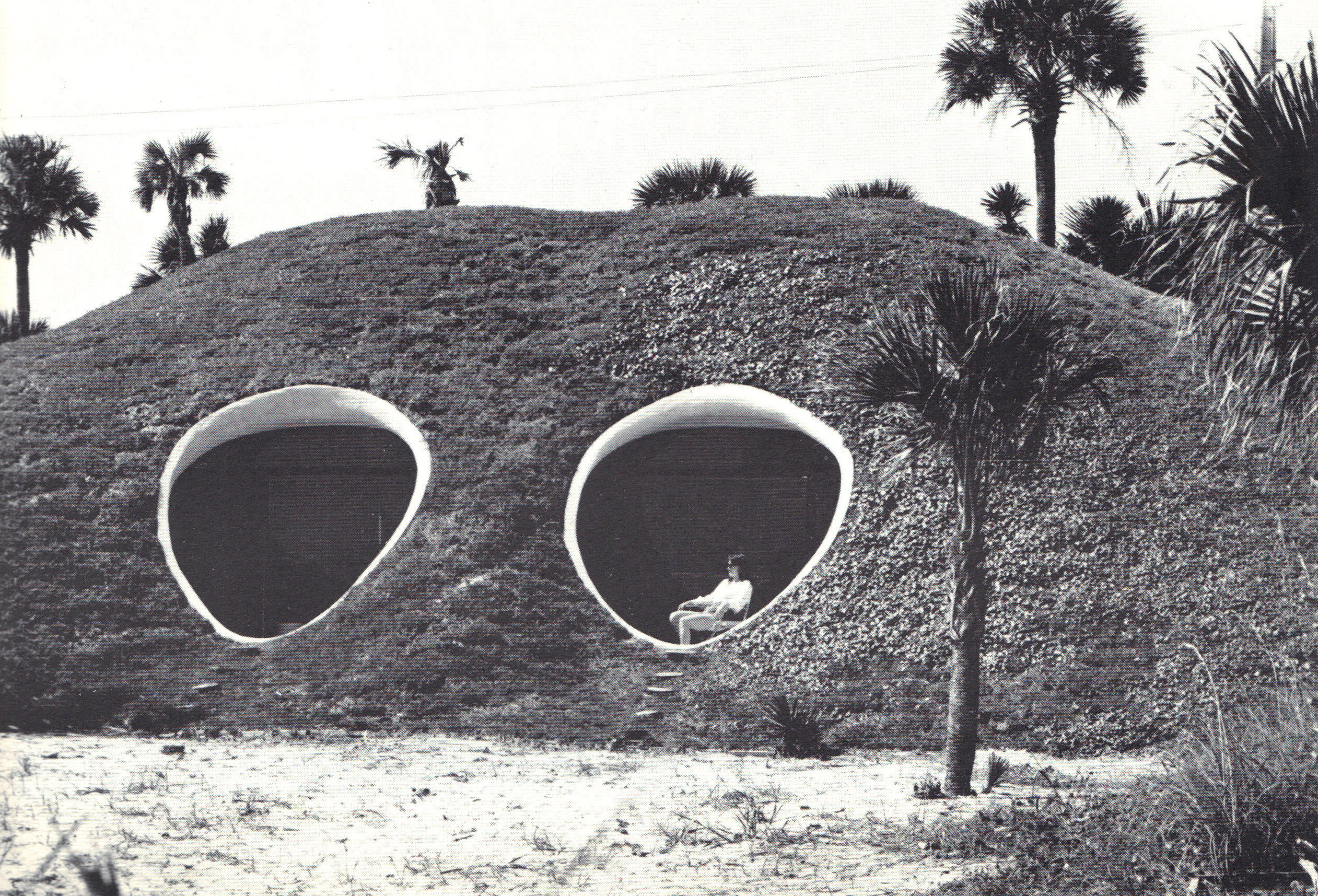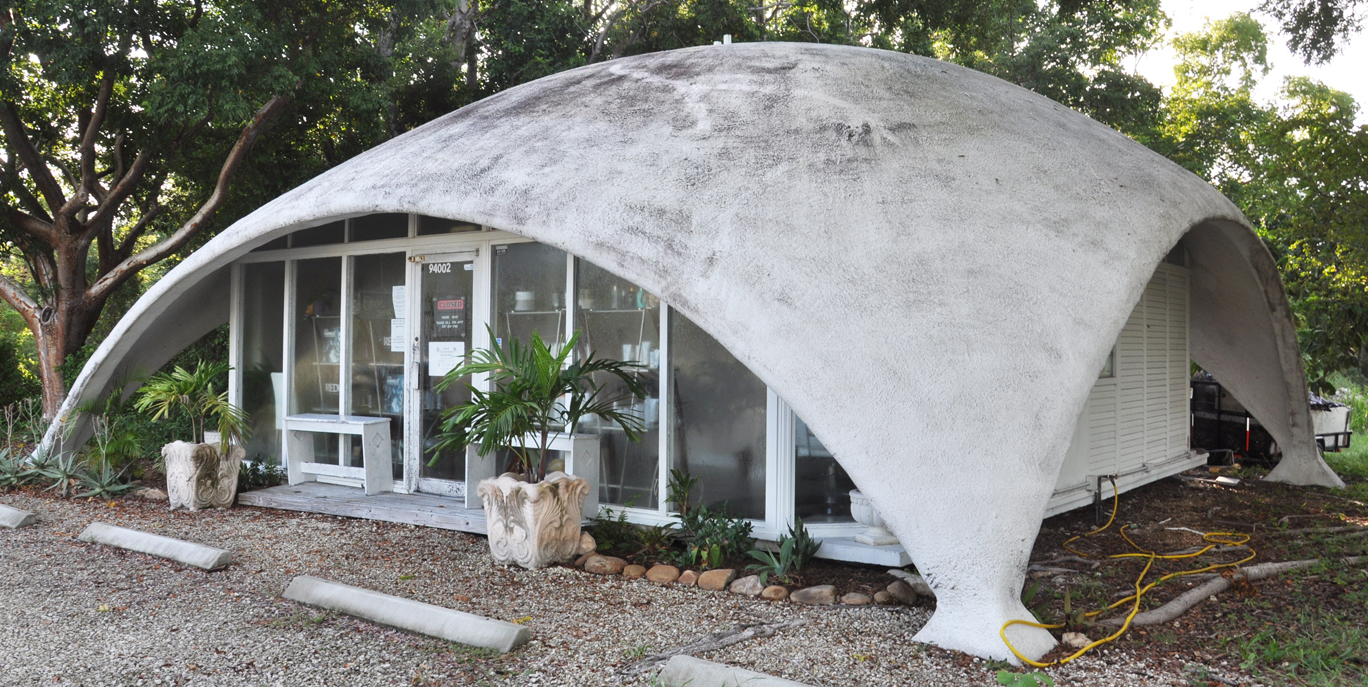HURRICANE HARDENING
_________________________________________In July 1992, my parents got married and bought their first home together, a Kendall townhouse in Briar Bay, near the Falls. Less than a month later, Hurricane Andrew made landfall just south of them, and the Category 5 storm ripped the roofs off of every townhouse in their neighborhood except theirs. At their home, a royal palm had fallen quickly in the storm, onto the roof, creating a brace, and a wind-ramp, securing the roof for the duration of the storm. I think I owe a lot of my fascination with climate-adaptation and obsession with risk-management to this story. Florida has a special vulnerability to Hurricanes, and there is some architectural history here that reflects that. We’ll survey “dome” typologies, including the Pensacola Monolithic Dome that survived Hurricane Ivan, and the ruins of the Cape Romano Dome House which has been sinking further into the gulf every year. We’ll learn about Peter Vander Klout’s hurricane-proof home designs. This section will cover general themes of “hardening” and “resiliency” with hardening referring to fortifying systems against disasters, and resiliency referring to the ability to bounce back and recover after disasters. This will expand beyond dome-designs to include other “prepper” methodologies, like storing power and food. We’ll discuss how to apply “hardening and resiliency” methods to social systems to better collectively weather the storm so we are building shelters, instead of bunkers.
![Dune Houses (1975) William Morgan, Atlantic Beach FL]()
![Dune House (interior), William Morgan]()



Subthemes
- Permanent / Impermanent Space
- Aerodynamic Design
- Power / Batteries / Generators
- Food Storage
- Storm Surge (acknowledge more to come re:water in next section)
Examples
- Bubble Houses (Hobe Sound, Florida)
- Pensacola Monolithic Dome
- Cape Romano Dome House
- William Morgan’s Dune House
- Peter M. Vanderklaauw’s Hurricane Homes


RESOURCE LIST
